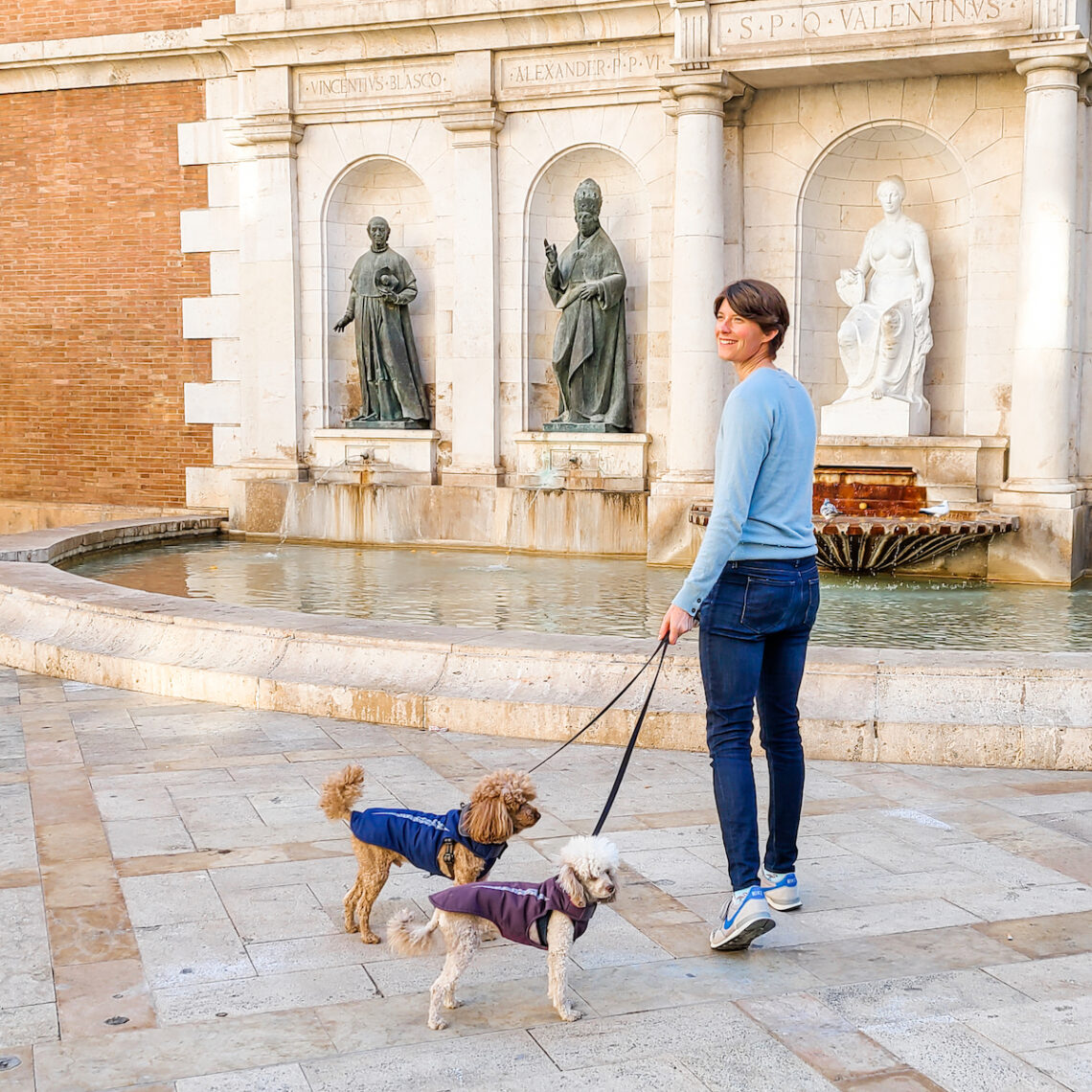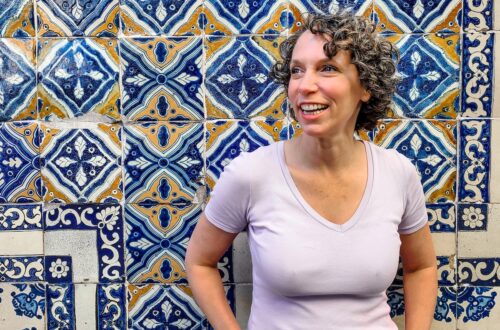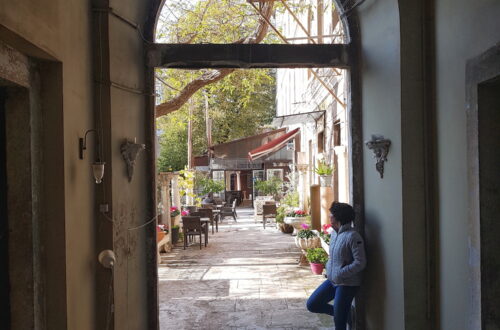
A Month of Spanish Food, History and Culture at a Surprising Price
Spain is a country that we’ve been dreaming about forever. Finally we had our first taste: a whole month here in the city of Valencia. Between the food, the history, the culture, there’s so much on offer in Spain’s third largest city. Of course, we wanted to experience it all while we’re here. But we didn’t want to break the bank to do it. We wanted a month of immersion, exploration and discovery — and we wanted to still come in on budget.
Now that we’re at the end of our month in Valencia, it’s the time when we look back at all of our experiences in a city — where we stayed, what we did, what we ate — and we put a price tag on it. How much did we spend and what did we get for it?
We knew coming to Valencia that there’s really no limit to the experiences you can spend on here. There are countless tours to take, so many beautiful museums to visit, and at times it seems like the entire population is out dining in restaurants. For our part, we didn’t hold back on racking up the memorable experiences.
Of course, we had to explore Turia Park. This is a park that does a semi circle around the city and it’s just perfect for long walks with the dogs. We also really enjoyed discovering the street art of Valencia. These are interesting murals hidden away in the side streets of the El Carmen are and they make for a great backdrop for photos.
I really enjoying art so I had to check out the Fine Arts museum. This is a lovely spot if you’re a fan of the Gothic and Renaissance periods. We also went to the spectacular silk market, which is considered one of Valencia’s most significant Gothic buildings.
However, my personal favourite had to be the ceramics museum. This is housed in an incredible 18th century Baroque palace. It does have an actual ceramics exhibit but even more impressive were all the restored palace rooms…one opulent room after another. Normally all these museums and historic sites have a small admission charge but the government is currently trying to encourage tourism so they were all free.
Of course, we also enjoyed some entertainment that did cost money. We went to the Cathedral of Valencia, which was incredible. I mean we’ve seen some pretty impressive cathedrals around Europe and this one is definitely among the most spectacular. We did a walking tour focused on Valencia’s medieval history, which really helped us understand how the city evolved from Roman and Muslim times to the 15th century. We don’t always pay for walking tours in every city but this one was really worthwhile.
Since Valencia is the birthplace of paella, I couldn’t resist doing a paella cooking class. I went into the class thinking that maybe I would cook up a little paella at home but, by the time we were done, I realized it’s way too complicated a dish for someone living in an Airbnb. But the end result was delicious.
Gillian had fun exploring the city by bicycle, using the bikes available for rent from stations all across the city. One place she cruised through was the stunning City of Arts and Sciences complex. And while she was there, Gillian visited Oceangraphic, Valencia’s aquarium. This attraction wasn’t cheap to visit but it was certainly one of the most impressive aquariums she’s been to. It was sad to see all the animals cooped up in tanks but the overall design of the place was really beautiful.
That brings us to dining out, an area of travel spending that can add up very quickly, especially in a city like Valencia.
Spain has some amazing culinary traditions and we wanted to experience as many as possible.
There’s the desayuno, which is breakfast, and usually restaurants will offer a deal: a coffee and a pastry or toast with grated tomato for a couple euros. There’s the ezmorzaret, also known as the almeurzo, which is like a brunch featuring a sandwich, olives, peanuts and a beverage. This is usually taken anytime between 9am and noon.
Then there’s the menu del dia, the menu of the day, which is a special deal for lunch offered by most restaurants. It’s available anytime between 1pm and 4pm and we sampled quite a few. For a quick snack in the late afternoon, there’s tapas. And in the early evening around 7pm, the locals often like a sweet to get them through to dinner time. For us, this meant churros con chocolate.
The only meal that we didn’t try in a restaurant was dinner. This is because the Spanish typically take their dinner very late, usually around the time that we go to bed. But after eating ezmorcaret and a big menu del dia we were happy with something small at home for dinner, which brings us to groceries.
There is an amazing selection of groceries available here. With so many delicious goodies on offer, it can be easy to spend a lot. What worked well for us was stocking up on the basics at the Mercadona, which is a low-cost supermarket chain. And then we liked to top up our pantry with specialty items from the central market. We did find the market pretty overwhelming at first but by now we’ve found all my favourite vendors.
With so many places to go and restaurants to try, what made it all so easy was living in a central location. We could step out our front door and be at the central market or the cathedral in minutes. In fact, we could literally see the main square from our living room. Of course, such a great location doesn’t come cheap. When we first started looking at Airbnbs, we had some real sticker shock with the prices. Of course, it’s always possible to pay less but we’ve learned that we really value comfort and style in our Airbnbs and we don’t mind paying a little extra for them.
What really got us excited about our apartment are all the windows. They make the whole space really light and bright and the view of all the historic buildings is really lovely. The living room is quite spacious with plenty of room for our morning yoga and even a little desk for Gillian’s editing. The furniture and art is a little eclectic but it’s grown on us. We’re really enjoying the kitchen. It’s small and there’s not much counter space but it’s clean and tidy with everything tucked away, including all the appliances we need. The bedroom is also nicely designed with lots of storage space. It does have a few quirks so if you want the full tour you can take a look at our first day in Valencia video.
Our time in Valencia wasn’t exactly cheap but it did turn out to be more affordable than we expected for a Western European country. Let’s add it all up and see what the damage is for a full month. For entertainment, there was so much to see and do here we ended up spending $150 USD. However, there was lots of free stuff available too so there’s no need to spend so much to have a memorable time. Transportation was $39 USD and this included a cab from the airport and renting a bicycle for a week. Dining out at least a few times a week was $365 USD and we feel like that was money very well spent. Groceries cost $435 USD. Finally, our beautiful apartment in the historic centre over the pricey holiday season came in at $2000 USD, which is definitely on the high end of anywhere we’ve stayed. But it scored big points for aesthetics and location.
The total amount we spent for a full month was $2,990 USD. Not our cheapest month on record but surprisingly affordable for such a cosmopolitan city. Even though we really indulged in dining out, our total spending on food was actually on par with other destinations.





4 Comments
Brenda Kroez
Thank you so much for these articles describing the cities you visit and how much you spend. I look forward to reading them. Valencia looks gorgeous!
Our Freedom Years
So great to know that you’re finding our content helpful! Valencia really is gorgeous and we’re expecting more of the same from our next stop, which is Seville. Spain is quickly becoming one of our favourite countries.
Juanita Simeon
You two are so inspirational! I stumbled across your YouTube channel, and now I’m reading your wonderful blogs. Thank you for sharing all the details of your adventure. I’m from Toronto, and it’s lovely to see such an accomplished, articulate, and caring married couple represent us Canadians so well! I’m truly grateful.
I hope to travel in a similar fashion when I retire in a few years, and I’m paying very close attention to your monthly expenditures to see if slow travel is feasible for myself and my partner in the future. I wondered if you expect your monthly costs to increase once our world opens up again post-pandemic when there will be more demand for Airbnb lodgings. Will you simply increase your monthly budget if this happens?
I’m also curious about the techniques you use to travel in and out of the Schengen zone and manage the 180 day cap requirements.
Thank you once again.
Juanita
Our Freedom Years
Hi Juanita – Thanks so much for your lovely comment! It’s really motivating for us when we hear that our content is helpful for fellow adventurers.
Regarding the cost of Airbnbs, we found that the “COVID discount” is long over and prices have been back to normal for the past year. For our budget, we find it most helpful to look at it on an annual basis since our spending varies quite a bit depending on the destination. If we have a couple months in a high cost country like Spain, we know our budget will appreciate it if we spend the next couple months in a place like Turkey.
For the Schengen Zone, we find it helpful to think of travel in six month blocks. If we plan to spend 180 days in the Schengen Zone, we usually have an idea of which other country or countries we’ll go to for the next few months, like Croatia, Serbia, or Albania, just to name a few. Hope that helps!